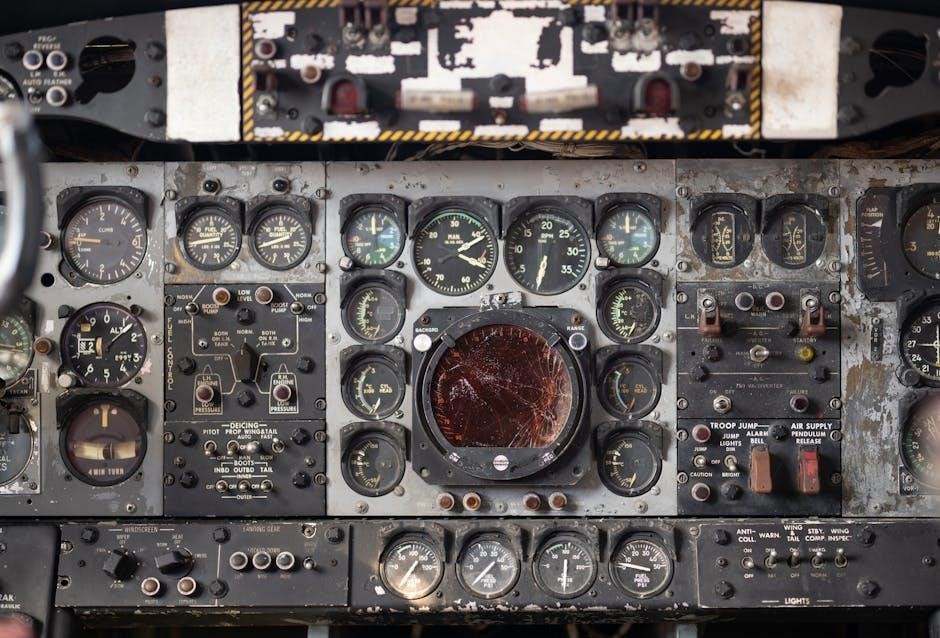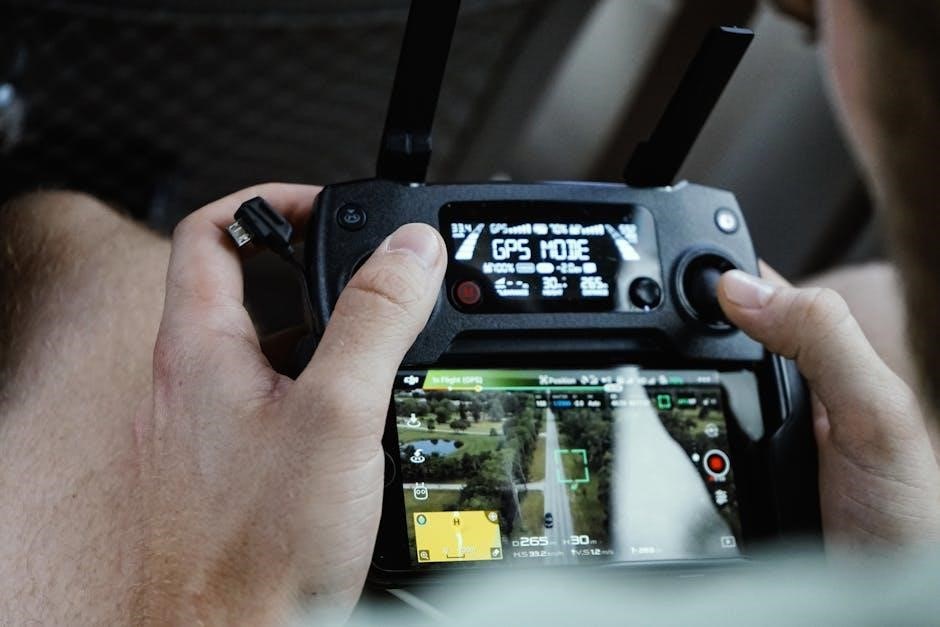2011 honda pilot user manual
Welcome to the 2011 Honda Pilot User Manual, your comprehensive guide to understanding and optimizing your vehicle’s features, maintenance, and performance for a safe and enjoyable driving experience.
Importance of the User Manual
The 2011 Honda Pilot User Manual is an essential resource for owners to maximize their vehicle’s potential while ensuring safety and efficiency. It provides detailed instructions on operating features, maintenance schedules, and troubleshooting common issues. By referring to the manual, drivers can understand the vehicle’s advanced technologies, optimize fuel efficiency, and adhere to recommended maintenance routines. Additionally, it serves as a guide for understanding safety features and proper driving practices. Regularly consulting the manual helps prevent potential problems and extends the lifespan of the vehicle. It is recommended to keep the manual in the glove compartment for easy access and reference. This ensures a safe, enjoyable, and trouble-free driving experience.
Key Features of the 2011 Honda Pilot
The 2011 Honda Pilot is a mid-size crossover SUV designed for versatility and comfort. It features a powerful 3.5L V6 engine with Variable Cylinder Management, offering a balance of performance and fuel efficiency. The Pilot seats up to eight passengers, providing ample space for families or cargo. It includes advanced technologies such as a Multi-Information Display and an optional rearview camera for enhanced convenience. Safety features like Electronic Stability Control, Anti-lock Braking System (ABS), and Electronic Brake Distribution (EBD) ensure a secure driving experience. The Pilot also offers a smooth ride with its independent suspension system. With its spacious interior, robust performance, and innovative features, the 2011 Honda Pilot is a reliable choice for both daily commutes and long-distance trips.

Safety Precautions and Guidelines
Always follow safety guidelines to ensure safe operation of your 2011 Honda Pilot. Wear seat belts, monitor airbag systems, and maintain proper vehicle maintenance to prevent accidents and ensure safe driving experiences.
General Safety Information
Your safety is a top priority when operating the 2011 Honda Pilot. Always wear your seat belt and ensure all passengers do the same. The vehicle is equipped with advanced airbags designed to protect occupants in the event of a collision. Proper use of child restraints is crucial for the safety of younger passengers. Familiarize yourself with the location and operation of safety features such as the emergency brake and anti-lock braking system (ABS). Regular maintenance, as outlined in the manual, is essential to ensure all safety systems function correctly. By following these guidelines, you can help prevent accidents and protect yourself and your passengers while driving. Always refer to the manual for detailed instructions on safety procedures and features.
Vehicle Safety Features
The 2011 Honda Pilot is equipped with a range of advanced safety features designed to protect occupants and prevent accidents. The vehicle features a comprehensive airbag system, including front, side, and side-curtain airbags, to provide maximum protection in the event of a collision. Additionally, the Pilot includes electronic stability control, which helps maintain traction and stability on various road conditions. The anti-lock braking system (ABS) ensures precise control during hard braking, while brake assist enhances stopping power in emergency situations. A multi-angle rearview camera is also available, offering improved visibility when reversing. These features, combined with a robust body structure, make the Honda Pilot a safe choice for drivers and passengers alike.

Understanding the Instrument Panel
The instrument panel in your 2011 Honda Pilot provides essential information via the Multi-Information Display (MID), including odometer, fuel level, and customizable settings for optimal driver convenience.
Dashboard Overview
The 2011 Honda Pilot dashboard is designed for functionality and ease of use, featuring a clean layout with intuitive controls. The dashboard includes the Multi-Information Display (MID), which provides key data such as odometer readings, fuel levels, and trip information. Analog gauges for speed, RPM, and engine temperature are centrally located for quick reference. The dashboard also houses controls for the climate system, audio entertainment, and navigation, ensuring drivers can access essential functions without distraction. The design emphasizes visibility and accessibility, with buttons and knobs arranged logically to enhance the driving experience. This user-friendly setup helps drivers stay informed and in control while on the road.
Warning Lights and Indicators
The 2011 Honda Pilot dashboard features a range of warning lights and indicators to alert drivers of various vehicle conditions. These include lights for low oil pressure, battery issues, and brake system malfunctions. The Vehicle Stability Assist (VSA) indicator illuminates when the system is active or if a problem is detected. Additionally, the Multi-Information Display (MID) provides detailed alerts, such as seatbelt reminders, tire pressure warnings, and maintenance due notifications. Understanding these indicators is crucial for ensuring driver safety and maintaining the vehicle’s optimal performance. The manual provides a comprehensive guide to interpreting each light and taking appropriate action if they appear during operation.

Driving Controls and Features
The 2011 Honda Pilot offers intuitive driving controls, including a steering wheel with mounted controls for audio and cruise functions, responsive pedals, and smooth transmission operation.
Steering Wheel and Pedals
The 2011 Honda Pilot features a steering wheel designed for comfort and control, with integrated audio and cruise control buttons for easy access. The pedals, including the accelerator, brake, and clutch, are positioned for ergonomic efficiency, ensuring smooth and responsive driving. The steering wheel’s tilt and telescoping adjustments allow drivers to customize their position for optimal comfort. The pedals’ precise response enhances acceleration and braking performance, while the steering system provides clear feedback for a confident driving experience. These features work together to create a seamless and intuitive interaction between the driver and the vehicle, making every journey more enjoyable and stress-free.
Transmission and Gear Shift
The 2011 Honda Pilot is equipped with a smooth 5-speed automatic transmission, designed to deliver seamless shifting and optimal performance. The transmission features Grade Logic Control, which adjusts gear shifts to maintain traction and stability on inclines. The gear shift is intuitive, with clear indicators for Park, Reverse, Neutral, Drive, and Low gears. For enhanced control, the Pilot offers a manual shift mode, allowing drivers to adjust gears according to road conditions. Proper use of the transmission and gear shift ensures efficient fuel consumption, smooth acceleration, and responsive handling. Regular maintenance, as outlined in the user manual, is essential to preserve the longevity and performance of the transmission system. This ensures a reliable and enjoyable driving experience for years to come.

Convenience and Comfort Features
The 2011 Honda Pilot offers advanced convenience and comfort features, including dual-zone climate control, rear-seat entertainment systems, and a premium audio system for enhanced driving comfort.
Climate Control and Heating
The 2011 Honda Pilot features a dual-zone automatic climate control system, allowing driver and passenger to set individual temperatures. The system includes air conditioning, heater, and air quality controls. Rear-seat passengers benefit from dedicated vents for consistent comfort. The user manual details how to operate the climate controls, adjust settings, and maintain optimal air quality. Regular maintenance of the heating and cooling systems, as outlined in the manual, ensures reliable performance and comfort throughout the year. Proper use of these features enhances the overall driving experience, providing a comfortable environment for all occupants.
Entertainment and Navigation Systems
The 2011 Honda Pilot offers an advanced entertainment and navigation system designed to enhance your driving experience. The system includes an AM/FM radio, CD player, and USB connectivity for seamless music integration. Bluetooth functionality allows hands-free phone calls and audio streaming. For navigation, an optional system provides voice-guided directions and real-time traffic updates. The manual details how to operate these features, including setting up Bluetooth, using voice commands, and updating the navigation system. Rear passengers can enjoy entertainment with an optional rear-seat DVD system. Proper use of these systems ensures safe and convenient access to entertainment and navigation, making every journey more enjoyable.

Maintenance and Care
Regular maintenance is crucial for the longevity and performance of your 2011 Honda Pilot. This section provides detailed schedules and guidelines to keep your vehicle in optimal condition.
Maintenance Schedule
Regular maintenance is essential to ensure your 2011 Honda Pilot performs optimally. The recommended maintenance schedule includes oil changes every 5,000 to 7,500 miles, tire rotations every 15,000 miles, and brake inspections every 30,000 miles. Fluid checks, such as engine oil, coolant, and transmission fluid, should be performed at each service interval. Additionally, the air filter should be replaced every 30,000 miles, while the spark plugs need attention every 100,000 miles. Adhering to this schedule helps prevent mechanical issues and extends the vehicle’s lifespan. Always consult the owner’s manual for specific guidelines tailored to your driving conditions and mileage.

Fluids and Lubricants
Proper fluid levels and lubrication are crucial for the 2011 Honda Pilot’s performance and longevity. The engine oil recommended is 5W-20, which should be checked regularly and changed as per the maintenance schedule. The coolant should be a 50/50 mix of Honda-approved antifreeze and distilled water to prevent overheating. Transmission fluid (Honda ATF DW-1) ensures smooth gear transitions, while brake fluid (Honda DOT 3) is essential for reliable braking. Power steering fluid (Honda PSF) maintains steering system functionality. Windshield washer fluid should be refilled as needed. Always use Honda-recommended fluids to avoid damage and ensure optimal performance. Refer to the manual for specifications and guidelines to maintain your vehicle’s health.

Troubleshooting Common Issues
The 2011 Honda Pilot User Manual provides detailed guidance for identifying and addressing common issues, ensuring safe and effective problem resolution to maintain optimal vehicle performance.
Diagnosing Electrical Issues
Diagnosing electrical issues in your 2011 Honda Pilot begins with identifying symptoms like faulty warning lights or inconsistent system behavior. Consult the Multi-Information Display (MID) for error codes, which provide clues about system malfunctions. Use a scan tool to retrieve detailed trouble codes from the vehicle’s onboard computer. Always refer to the manual for specific procedures and guidelines to avoid further damage. Ensure all electrical connections are secure and free from corrosion. If issues persist, consult a certified technician for professional assistance. Regular checks and timely repairs are essential to maintain your vehicle’s electrical systems in optimal condition.
Addressing Common Problems
Addressing common issues in the 2011 Honda Pilot involves proactive maintenance and prompt repairs. Regularly check fluid levels, battery condition, and tire pressure to prevent breakdowns. For issues like uneven tire wear, inspect alignment and balance. If the MID displays error codes, consult the manual or a professional to resolve them. Lubricate door hinges and locks periodically to maintain smooth operation. For persistent problems, refer to the troubleshooting section in the manual or seek assistance from a certified Honda technician. Timely addressing of these issues ensures reliability and extends the vehicle’s lifespan, keeping your driving experience safe and enjoyable.
The 2011 Honda Pilot User Manual is an invaluable resource for ensuring optimal performance, safety, and longevity of your vehicle. By following its guidelines, you can enjoy a reliable and satisfying driving experience for years to come.

Importance of Regular Maintenance
Regular maintenance is essential for the longevity and optimal performance of your 2011 Honda Pilot. Adhering to the recommended maintenance schedule ensures that all components function efficiently, preventing potential issues and costly repairs. By staying on top of oil changes, tire rotations, and inspections, you can maintain fuel efficiency, reduce emissions, and uphold safety standards. Additionally, regular maintenance helps preserve the vehicle’s value and provides peace of mind while driving. Always refer to the user manual for specific guidelines tailored to your Honda Pilot, ensuring you follow the manufacturer’s recommendations for the best results.

Final Tips for Optimal Performance
To ensure your 2011 Honda Pilot performs at its best, adopt a proactive approach to driving and maintenance. Avoid aggressive acceleration and braking to maintain fuel efficiency and reduce wear on the vehicle. Regularly check fluid levels, tire pressure, and battery health to prevent unexpected issues. Keep the interior and exterior clean to preserve aesthetics and functionality. Utilize features like Eco mode for improved fuel economy and adjust settings according to driving conditions. Stay informed about software updates for navigation and entertainment systems to enhance performance. By following these tips, you can maximize your vehicle’s potential, ensuring a smooth and enjoyable driving experience for years to come.
